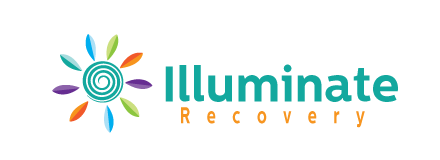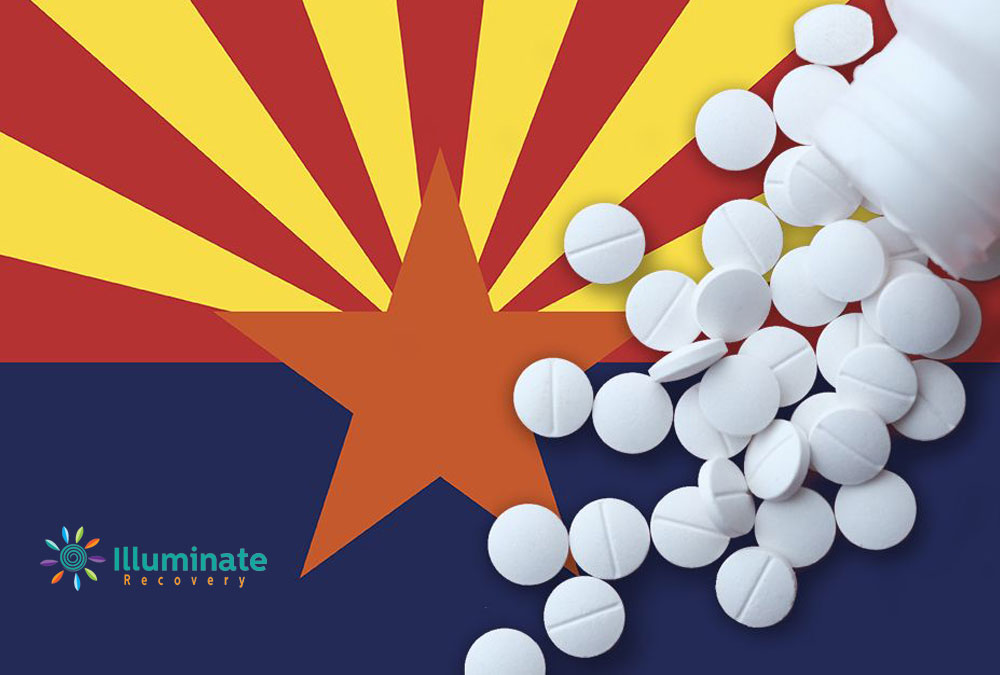In Arizona, more than five people die each day from an opioid overdose. Opioid misuse is currently a national public health emergency affecting the lives of people and families across the country. A multitude of factors created what is now the current opioid crisis in America. What’s most important is focusing on how we can work together to fix it. Opioid prevention is our strongest tool to battle opioid misuse and overdoses.
What Are Opioids and What Do They Do?
According to the CDC, opioids are a type of drug that is prescribed to help relieve pain in patients. Unfortunately, opioids also have highly addictive qualities and a variety of other risk factors that make them extremely dangerous, such as how strong they are in comparison to basic pain medication. Opioids target the opioid receptors in a person’s brain to relieve pain and relax the body, but tolerance to their power can be built quickly.
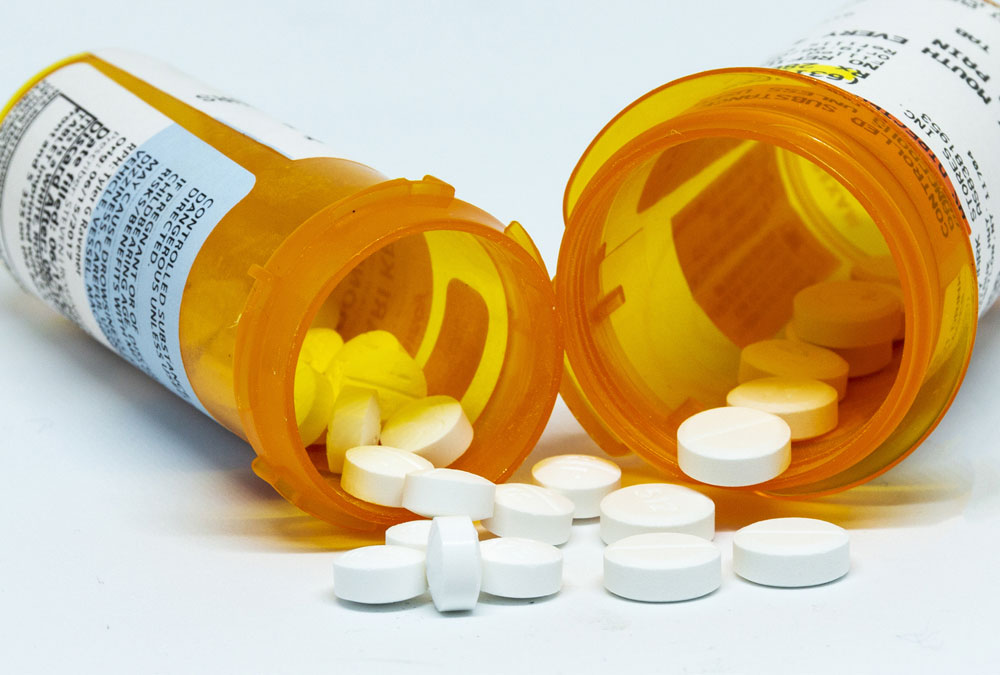
There are three federal classifications of opioids:
Prescription
Prescription opioids are the most common types of opioids and are used within the medical field. They are often prescribed to patients dealing with severe pain but can also be used for moderate issues if a doctor sees fit. Patients that have been in accidents, faced bodily trauma, or undergone surgery are commonly prescribed opioids to help relieve their pain. Common opioids used in the medical field include:
- Oxycontin
- Codeine
- Vicodin
- Morphine
Synthetic
In addition to the common prescription opioids you may find in a hospital, there are also what are referred to as “synthetic opioids.” Synthetic opioids are similar to natural opioids in that they both target the same receptors in your brain, but they are created in a laboratory instead of found naturally. Because of this, synthetic opioids can be altered to be even more powerful than the basic ones and can be extremely dangerous.
Illegal
Many opioids are illegally created and distributed, though many of them did have their start as pain-relieving drugs that were approved for medical use. Heroin, on the other hand, is an illegal opioid that was created with no approved medical or legal use. It is made and distributed against the law and has increased 56% in use in the past few years across the country, according to the CDC. Illegal opioids are dangerous and unregulated, making the risks of taking them much higher.
What Are the Risks of Opioid Misuse?
Opioids have many dangers, which is why this public health emergency has taken so many lives. The risk factors of taking opioids include their addictive nature, the potential for overdose, and the negative toll on overall health.
Addictive Nature
Because opioids provide pain relief by targeting your brain’s opioid receptors, they also increase the dopamine within your body. Dopamine is regarded as the pleasure chemical in your brain. When you stop taking an opioid, you quickly notice a decrease in “good feelings” because dopamine levels are lowering once again. This causes people to get addicted to that “good feeling” that comes from the medication, and they begin taking opioids frequently to get that same feeling back.
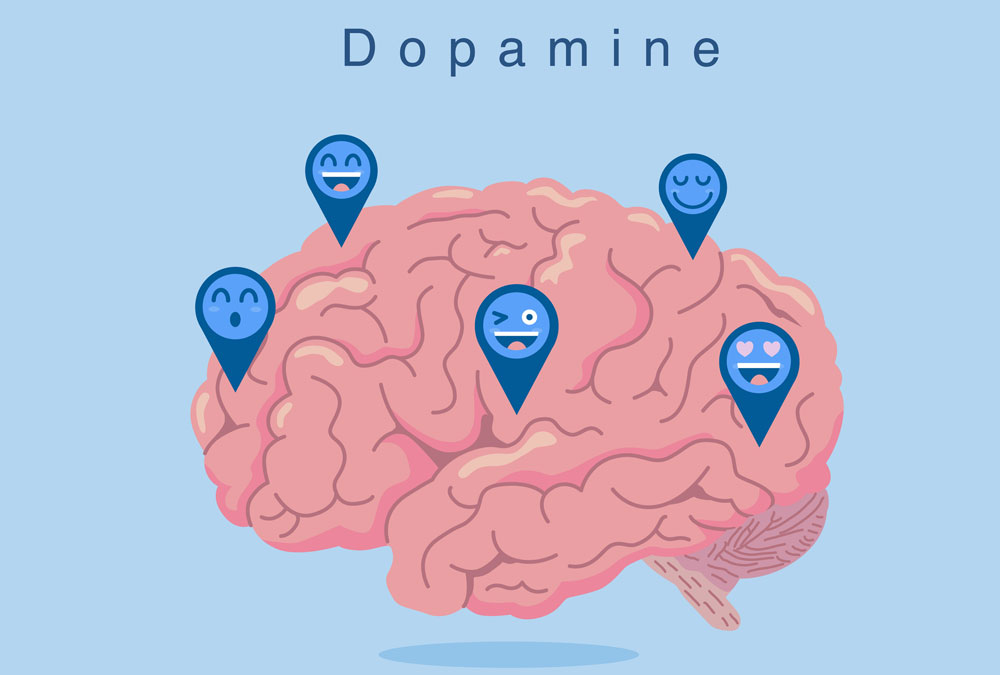
In addition to playing with your dopamine levels, opioids can also allow users to quickly develop tolerances to the drug. This means that to have the same feelings of relief and relaxation that you did when you first started taking the medication, you have to take more to get there. With an increased tolerance, there is also a much higher chance of forming a dependency.
Potential for Overdose
One of the biggest risks of taking opioids is the potential for an overdose. Opioids are incredibly strong drugs that were created for medical use, only to be used in severe circumstances. As time went on and the opioid crisis grew, accessibility to large amounts of opioids became a massive issue.
Now, if people get their hands on opioids illegally, there is no way for them to know what a “safe” dose is, as a doctor is not prescribing it and the substances are highly unregulated. Opioids found on the street, such as fentanyl, can also be even stronger than basic ones you might be prescribed and can cause accidental overdoses in many cases. In 2019, 1,907 deaths occurred from overdoses in Arizona, some of which were caused by fentanyl. How much do you know about fentanyl? Take a fentanyl quiz.
Negative Toll on Overall Health
Opioid misuse can take an immense toll on your health. Physical symptoms can include digestive issues, poor coordination, weight loss, sunken-in eyes, bloated face, pupil constriction, and more. Cognitive issues can involve losing your motor skills, impaired judgment, slowed or slurred speech, inability to concentrate, and an overall sense of feeling “out of it.” You may also notice that someone struggling with opioids may be quick to have sudden fits of rage or outbursts, mood swings, irritability, and a growing sense of paranoia involving the people close to them.
What Are the Best Opioid Overdose Prevention Methods?
When it comes to stopping opioid misuse, prevention is the best place you can start. Some of the best methods of opioid overdose prevention include education, proper storage of them, using alternatives to opioids, harm reduction, and talking honestly with your doctor.
Educating People
Education plays a critical role in prevention. Educating people, both young and old, about the potential dangers of opioid misuse can help save lives. School systems, hospitals, and parents can all play a part in educating children and young adults about what can happen if they misuse opioids. Opioid education can include teaching young adults about the different kinds of opioids and their dangers or inviting a speaker who struggled with addiction can be even more powerful.
Storing Opioids Properly
Prevention can come in many forms. If you or a family member has been prescribed opioids to use at home, you must store them safely. Whether or not someone already has a dependency on the drugs doesn’t matter because if they aren’t stored properly and someone misuses them, they can build a dependency fast. Store your opioids somewhere children or others can’t easily access them to prevent a potential overdose or dependency.
Using Alternatives
There are a variety of different kinds of pain medications out there. While not all of them may be as strong as opioids, there are still alternatives to using them and giving you some relief. Some people like to avoid using opioids, for example, because they know addiction runs in the family.
Others sometimes decide that they would prefer a milder type of pain relief. Regardless of what your reasoning may be, choosing to use alternative pain medication to an opioid is never a bad idea.
Reducing Harm
You might feel helpless if you or someone you love is struggling with opioids, but there are ways that you can work to protect yourself and others. Harm reduction is a practice that aims to reduce the harm caused by negative behaviors. Fentanyl test strips are a great method of harm reduction to share during the opioid crisis. These strips test a substance for any traces of the synthetic opioid and can help prevent potential overdoses from the drug. A large issue in the past few years has been the illegal lacing of drugs with fentanyl, ultimately causing overdoses and deaths.
Talking to Your Doctor
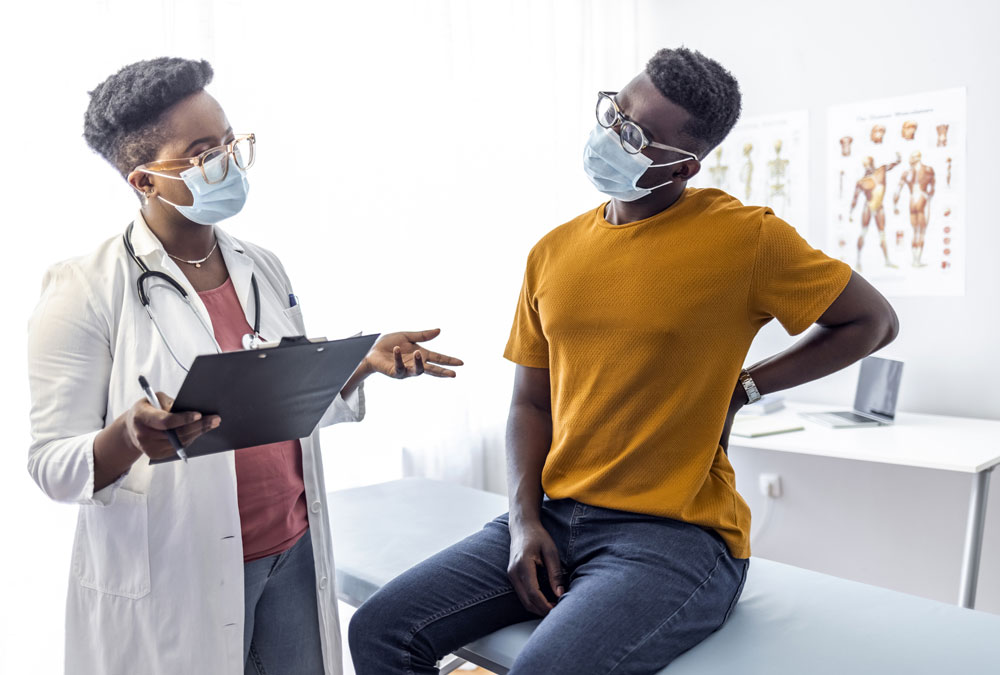
Talking to your doctor is an important part of being prescribed opioids. They will explain to you how to carefully and safely use your prescription and ensure that you are not overprescribed. If you have any worries about your prescription, you should feel comfortable voicing your concerns to your doctor; they can help you change what you need. It’s also important to regularly check up with your doctor as you use your opioid prescription to ensure you aren’t experiencing any negative side effects or issues caused by them. Your doctor can also help you find safe alternatives if you’ve decided that opioids aren’t the best relief method for you.
Keeping an Eye on Your Family and Friends
Whether someone you know just recently went through surgery where you know they’re going to be prescribed opioids or you’re worried about the health of a friend, be observant. Keep an eye on your family members and friends. If you start to notice things like missing medication, changes in appearance and health, or other symptoms of dependency, they may need your help.
Getting Help for an Opioid Dependency
If you or someone you love are struggling with opioid misuse, it’s never too late to get help. Hundreds of thousands of people every year struggle with opioids, and you are far from alone. There are multiple kinds of treatments for opioid dependencies, many of which can be completed simultaneously. If you’re not sure where to start, consult a healthcare provider for advice. Some common forms of opioid treatment include residential treatment, counseling and behavioral therapy, and medication.
Residential Treatment
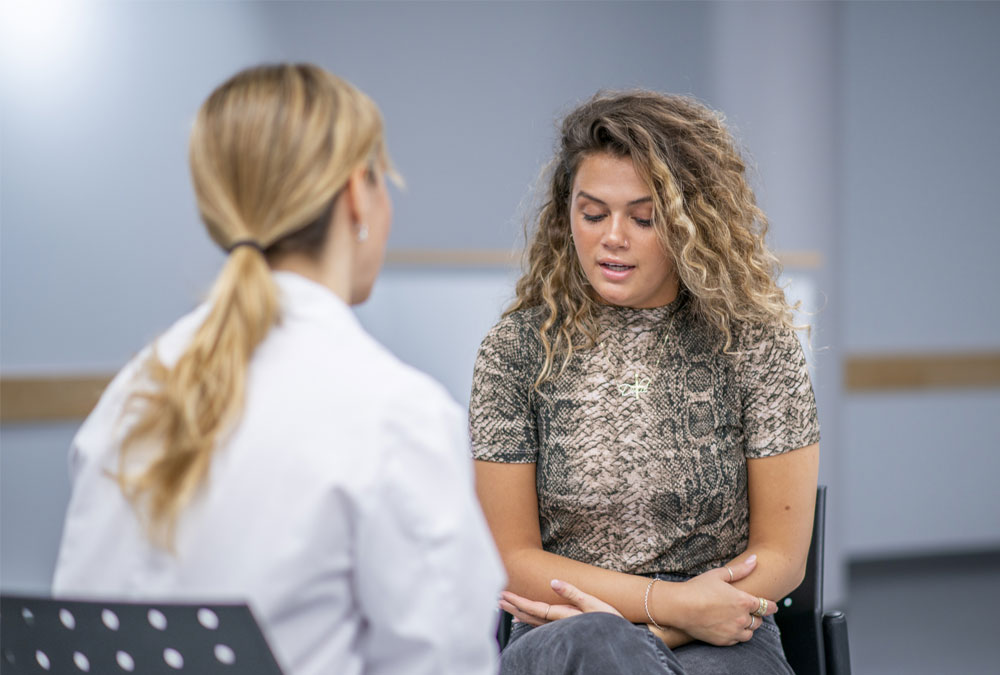
Residential or hospital-based treatments are among the most effective methods of opioid treatment because they often keep the patient living on the premises. This allows them to detox, go to counseling, and get medications, all while being taken care of properly. Another benefit of residential treatment is that patients are often with other people struggling with similar issues, which helps them all to grow together and feel supported.
Counseling and Behavioral Therapy
Counseling and therapy are vital to the recovery process for anyone. A strong support system, including a counselor or therapist, can help you not only deal with your struggles but overcome them. Therapy also provides patients with the ability to air their emotions and learn new coping mechanisms that can continue to help them in the future. Many people who struggle with addiction also have mental health issues, so counseling or therapy can help them immensely.
Medication
While to some people, it may seem counterintuitive to prescribe someone medication when they just recently had a problem with medication, certain prescriptions can aid in the recovery process. When a patient first begins treatment, some medicines can help alleviate the painful symptoms that come from withdrawal. After this, many patients in therapy may begin taking medications such as antidepressants or anti-anxiety medication to help with the stress they may feel.
Arizona Opioid Statistics
If you or someone you love is struggling with opioid misuse, you are not alone. Unfortunately, while the ongoing opioid epidemic continues to touch more lives than ever before, that means that a growing number of people are susceptible to health complications, overdose, and death. In fact, the CDC reports that since 2019, opioid overdose events have continued to increase—likely due to the rise of the illegal distribution of fentanyl.
The severity of the opioid crisis is certainly apparent here in Arizona. The Arizona Department of Health’s 2022 reports state that:
- 5+ people die in Arizona each year from opioid-related events.
- To date, over 1500 non-fatal opioid overdoses have occurred in Arizona in 2022.
- Over 370 confirmed Arizona deaths have occurred due to opioid use.
- Over 4,300 emergency and inpatient visits can be attributed to (or are suspected to be attributable to) opioid use.
- 32% of non-fatal overdoses occurring in 2020 affected individuals between the ages of 25-34.
- In June 2020 alone, over 250 overdose events were reported in Arizona.
- Over 66% of overdose events reported that year were men.
- In 2020, opioid overdoses increased across all age groups.
- The 25+ age range is continuing to experience a growing number of opioid overdoses in 2021 and 2022.
- From 2019-2021, over two-thirds of deaths that occurred in Maricopa County involved the use of opioids.
Opioid Misuse and Overdose Prevention FAQ
As mentioned above, education, proper medication storage, communicating honestly with healthcare providers, harm reduction, and vigilance by concerned family members are key to preventing opioid misuse. These quick facts may help you identify and prevent misuse or overdose and help you address an emergency situation.

Having been on both sides of active addition, both the person using, and the person affected by a loved one using drugs and alcohol, Lucas has been involved in recovery since 2009. He has been working in the treatment industry since 2013. Using his personal experience and wealth of knowledge learned from professional development and immersion in the recovery field, he has spoken with thousands of families and helped hundreds of people attain long-term sobriety. In 2020, the opportunity presented to join in and start Illuminate Recovery. Understanding the importance of personalized treatment plans and the complex nature between substance abuse and co-occurring disorders, has helped Illuminate Recovery build a strong curriculum and a phenomenal staff. Illuminate Recovery now has a medical doctor who is board certified in addiction medicine and a psychiatric medical doctor who works side by side with independently licensed therapists to provide compassionate and effective treatment.
